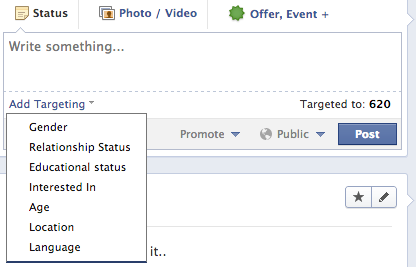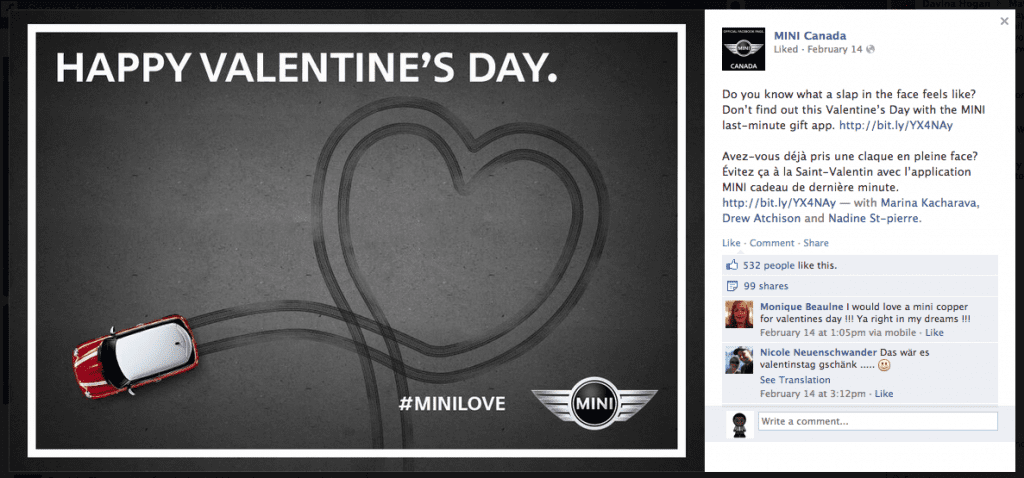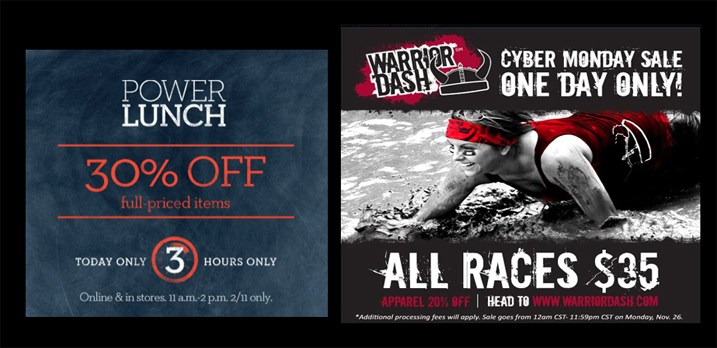Generating a handful of likes on Facebook isn’t hard. It’s also not hard to create Facebook posts that go viral. Now, if you’re struggling with these first two tactics, there are a handful of posts out there on making great status updates and increasing your number of fans out there for you to read. Yet, there aren’t many digital marketers out there talking about how you can actually use Facebook to make money for your business. Why? Well, the hardest part about Facebook for business is generating a positive ROI from it. But it is possible.

According to HubSpot, 93% of adults on the Internet are on Facebook, yet only 1% of a brand’s Facebook fans will ever make their way to the company’s main website. Many marketers will take the easy way out and blame their low conversion rates on Facebook saying things like: “Facebook ads just don’t work.” or “The brand isn’t strong enough.” Furthermore, there are tons of brands who have generated a handful of likes but are still unable to generate real business results. Few marketers, look to their own efforts for answers and this is the beginning of the problem.
Over the last 5 years I’ve helped a handful of businesses understand how they can use Facebook to generate meaningful and measurable results. Some of these brands went from having 5,000 fans with little engagement to six figures and enough engagement to make a Jersey Shore party look boring in the matter of months. Other brands have exceeded 10,000 monthly website referrals directly through their Facebook page.
What I learned the hard way is that monetizing Facebook is much more difficult than generating likes. It’s a lot more difficult then making a few viral status updates and way more challenging than reaching that 1,000 fan mark. That said, I feel that I now have a formula that works well and can be utilized across multiple industries. Here is a few of the things I’ve learned over the last few years and what I feel is a formula for success:
Stop Using Third Party Apps for Updates
Once upon a time I was a huge fan of Hootsuite and recommended it to every business I talked to about Facebook marketing. I’m still a huge fan of Hootsuite for social media management of tools like Linkedin and Twitter but can no longer recommend using Hootsuite or any other third party sites for Facebook. Why? Well, Facebook has recently established a system that makes content shared using third party sites less likely to show up in the newsfeeds of your fans.
Facebook uses an algorithm called EdgeRank to determine which updates are shown in your fans’ news feeds. It’s not as complicating as the Google algorithm that has is constantly changing but it’s worth understanding. The folks from Econsultancy put together a great piece that every marketer should read. It’s EdgeRank that lowers the value of an update from a third-party tool and prioritizes updates that are made directly from the Facebook platform.
How to Schedule Facebook Posts
One of the biggest benefits of using Hootsuite for Facebook was the ability to schedule posts in advance. Meaning, instead of actually sitting on Facebook on Christmas and wishing your fans, Merry Christmas, you could schedule the post to go out when you’re chowing down on some Turkey Dinner. Facebook now offers that exact functionality through their native status update feature. Now, you can go into Facebook, click the clock and you’ll be met with a drop down like this:
From there, select the year, month, day and time you want your content to be shared. To increase the efficiency and effectiveness of using Facebook for your status updates you can also target the users you share your status update with. If you select the crosshairs button next to the click you have the ability to filter and target your audience based on key psychographics:
This approach is most valuable for brands that have a broad audience and want to use targeted messages for specific verticals within their audience. For example, if you’re sharing an update that is specifically interesting or relevant to married couples; you can target people who are listed as “Married” in their relationship status. Using this approach you can increase your chances of converting a fan into a customer because you can speak to them individually as it relates to their key pain-points and presenting the value they would be most interested in.
Demonstrate Your Product or Service
A lot of people use Facebook to share memes, give away random prizes and solely chase the instant gratification of likes, comments and shares. While this is an easy way to demonstrate success to managers, directors and peers – It’s not an easy way to demonstrate success to accountants and marketers who get it.
At the end of the day, social media needs to help facilitate the process of doing business better. If you’re allocating precious resources to managing an account and developing status update – you need to see the return on these efforts. An effective way to convert Facebook fans into customers is to demonstrate the value of your products or services through videos or photographs. A great example of a brand that gets the importance of showcasing their product is Mini Canada:
The status update above is a great example of compelling content because it utilizes a top of mind idea/thought and combines it with a highly brand relevant value proposition. The top of mind idea is the fact that it’s a heart shared on valentines day and the value proposition is that the Mini is an extremely agile vehicle that can do things that most vehicles cannot. This is great because they show fans how they will benefit after they purchase a Mini Cooper. It allows them to imagine themselves with the product and ultimately remember the value proposition that is associated with this vehicle.
Balance Informative & Entertaining Content
Ideally, your Facebook business page should have a combination of both informative and entertaining content (tweet this idea). Content that is informative should be content that communicates your businesses value proposition, things going on in your office, a sneak peek behind the scenes and content that shares your vision and story. Beyond informative content, you also want to have content that provides your connections with a sense of entertainment. Content that entertains the user is more likely to spark engagement in the form of shares, likes, comments and views.
Brands need to strive to consistently give fans a reason to visit their page. While the majority of interaction with a brand happens on the newsfeed; if you can create content that is rich, compelling and interesting – You might get visits on your actual timeline. Easy ways to consistently provide great content is to implement tactics that I like to call “Like-Bait” or “Homeruns.” For example, when updating your status, end with a question. Engage your audience by asking a this or that question. Be social and ask them for their opinion. Post links to related content, and share videos and pictures to keep your page filled with content worth sharing.
Visual Storytelling on Facebook
The launch of the new Facebook newsfeed has made images more valuable on Facebook than ever before. As you can see, the new design presents more space which presents a great opportunity to tell your brands story.
A lot of brands get caught up in the sharing of memes with the hope of solely generating likes. Instead of chasing likes, you should be looking at how you can use your content to increase the number of people inquiring about buying your product or service. You should look at mixing your content between engaging posts and converting posts. Converting posts are those that have a clear call to action that is related to selling your product or pushing your customers down the sales funnel. Here are two conversion driven examples from Warrior Dash and Banana Republic on using Facbeook to push sales:
Embrace & Ensure Quick Response Time
Always respond to fans as quickly as possible. Facebook has allowed fans to now send brands direct messages along with the native function of writing comments and wall posts. This means you can now take conversations behind the scenes and deal with customer relations through one-on-one interaction. That said, sometimes, conversations need to be addressed publicly and should be addressed as soon as possible. Embracing customer relationship automation ensures a quick response time by enabling brands to efficiently manage and address public conversations, while also providing the opportunity to engage in one-on-one interactions with fans through direct messages on platforms like Facebook.
With intelligent management, Facebook can create successful leads and generate sales, but only as part of an overall marketing strategy. Recognizing that Facebook is a place filled with conversations is the first step of many in finding success. If you embrace your customers and address their concerns as soon as possible as much as possible; you’ll notice the benefits of ongoing interaction.
Remarketing Through Facebook Ads
Remarketing is not a new concept for advertisers; Google has been doing it through their display network for years. It’s essentially the act of tracking people when they visit your site along with their behaviour through a cookie and showing them ads on other sites when they leave. So what makes it different for Facebook ? First, it’s still relatively new to Facebook as they only released this functionality in 2012 and marketers were limited to targeting based on demographics and educated guesses. Second, according to Facebook, more than 950 million people spend over 6 hours per month on Facebook’s site. That’s huge.
Facebook ads allow businesses to remarket to visitors of their websites whenever they next visit Facebook. For example, a shopper has been checking out a pair of sunglasses on Gilt Groupe or Fab.com. When they come back to Facebook, they can show the user that exact pair of sunglasses they were considering on the brands website. Studies show that there is a significant increase in the click through rates on advertisements that are integrated with remarketing. I mean, it’s pretty obvious. Someone is almost down the path to purchase, backs out at the last minute and then you remind them of the product they should buy. It’s kind of like a last minute “Just Do it!”
According to Facebook, in the short time since its inception, click through rates have been close – or better – than other current ad exchanges. Recognizing this, it’s important for brands to spend time thinking about a remarketing strategy and how they can use this approach to drive consumers who they were once missing out on, back to their site and back down their purchasing funnel.
Remarketing Tip: Collect emails
One of my favourite ways to monetize Facebook ads for brands I work with is to help them understand the power of email. If you cant make the sale with a customer using remarketing, at least you can aim to capture their email to make the sale down the road. Each of your prospects, fans and potential customers are at different stages in the sales process. You need to recognize this and provide them with the stories, ideas, benefits and offers that will help them further down that path.
Emails are a great way to convert customers and a great way to move users down the path of purchase. Once you have your prospects email you want to develop an email drip system. Typically the email drip consists of at least 7 emails and it is sent to people automatically over time. With services like MailChimp, Aweber, or SendGrid you can easily create this process. The process for this ongoing storytelling is to use content that will educate first, build trust second and then close the deal.





